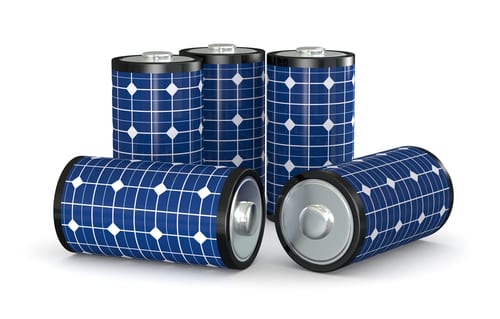Overcoming the challenge posed by the intermittent nature of renewable energy continues to be a major roadblock to high levels of renewable penetration and a stick with which doubters of clean energy can attempt to hit the sector. Battery and storage technologies are an obvious solution to this, but high prices have seen uptake and projects remain limited.

An increasing number of researchers and analysts, however, are making bullish predictions for cost reductions for storage solutions and in particular battery technologies that – like solar PV – can be implemented on a distributed basis and can mobilise the equity of homeowners.
With 3 GW of solar PV and 2 million small scale renewable energy systems, according to the latest figures from the Clean Energy Regulator, it is clear that Australian households and businesses are adopting clean technology in a big way. With these economies of scale, system price reductions have also been a major consequence, with PV panel and system prices reductions having a transformative effect on the economics of solar power.
Some are now predicting that a similar dynamic will emerge with small scale battery storage systems. “We will have a significant cost decrease,” predicts Dirk Uwe Sauer, from Aachen University’s Electrochemical Energy Storage Systems group. Sauer says that economies of scale for both lithium ion and lead acid batteries will cut battery costs by one-half to two-thirds.
“Four years ago it was predicted that the prices for battery cells, if you buy large quantities as car manufacturers do, would go below €200/kWh for cells by 2020,” said Sauer. “What you see today is that prices are well below this. Tesla is probably buying battery cells from Japanese manufacturers for US$150/kWh.”
For storage systems in homes, where weight and volume restrictions don’t apply as they do to cars, lead acid batteries can also be applied. Sauer says here too major cost reductions can be expected. “In home systems today, lead acid batteries are sold to the end user at €150 to €200/kWh, yet battery suppliers for car starter engines are sold to automotive manufacturers for €25/kWh.”
Sauer says the difference is that the automotive lead acid battery suppliers produce at “high quantity production sites,” producing in the order of 5 million starter batteries a year. With sufficient demand, a manufacturer of this size could supply 500,000 10kWh residential storage systems annually.
Large quantities of storage systems could have a transformative impact on electricity demand from the grid. Mike Sandiford, from the Melbourne Energy Institute, at Melbourne University, argues that NEM consumption data is already revealing falling demand, both in gross and peak terms.
Sandiford says that this is leading to lower utilisation rates of grid assets. Large numbers of batteries being hooked up to PV systems in Australian homes would presumably accelerate this trend – which would be extremely worrying for utilities.
In fact, a proliferation of storage systems could actually make electricity grids themselves more unstable. Theoretically, if large numbers of 3kWh to 5kWh batteries were installed in one section of suburban grid, when they all became full – potentially early in the day – the resultant surge of PV electricity could overload the grid.
However, distributed storage could also play a role in serving the grid – either through taking surges in PV-produced electricity off the low and medium voltage grids and even through frequency control. For “unloading”, control strategies can be implemented to adjust the time of day and rate when PV electricity is fed into the battery and limit the feed into the grid.
Researchers from Munich’s Technical University and the Centre for Solar Energy and Hydrogen Technologies (ZSW) in Stuttgart are currently developing such battery control strategies. At the recent IRES conference in Berlin, these researchers presented the latest data from these approaches which reveal that PV feed in can be managed to minimise grid load, without affecting the PV-electricity self consumption capacity of the household.
In short, by creating a dynamic strategy by which a battery charges itself from a PV array and at what time of day, surges of electricity flowing onto low and medium voltage grids can be minimised, with the battery still becoming fully charged to then be discharged in the evening and night. Weather prediction data, household demand predictions and the grid condition itself are the data required for the formulate these battery operation strategies.
What is currently lacking for these strategies to be employed is an incentive or market mechanism to do so. Aachen University’s Sauer is hopeful that in Germany at least, utilities and policy makers are waking up to the potential of large numbers of distributed storage systems to provide a service to the grid, along with to the homeowner. “The large utilities think a lot about decentralised storage systems because they understand that these systems most probably will come if they want them or not,” said Sauer. “Now they are looking very carefully at how they can be a part of the game and they are also thinking about if they can be one of the big suppliers of such systems. If they install them themselves, they can use them much easier for grid services.”
So it looks like it will pay for utilities and regulators to take a close look at distributed battery systems closely. Certainly, it’s clear that with the meagre tariffs being paid for solar power generated by households compared to high and rising electricity tariffs they’re paying, householders are bound to look at storage themselves. And if batteries get cheaper fast, distributed storage could be set to make a big impact on Australian electricity grids and markets.










